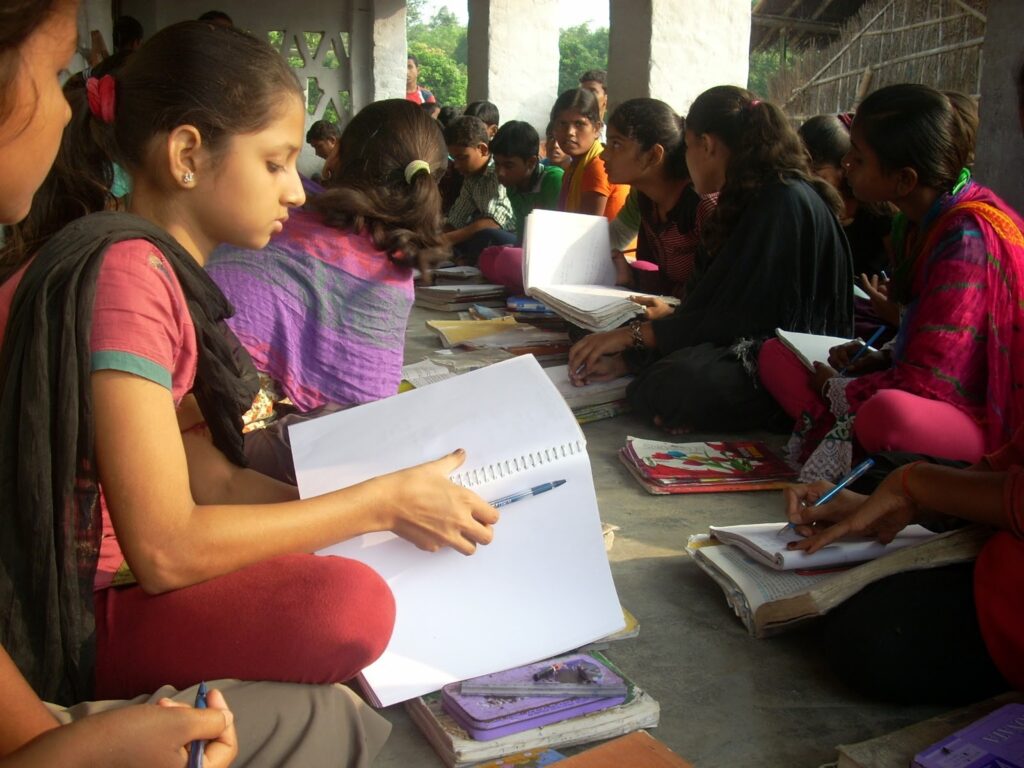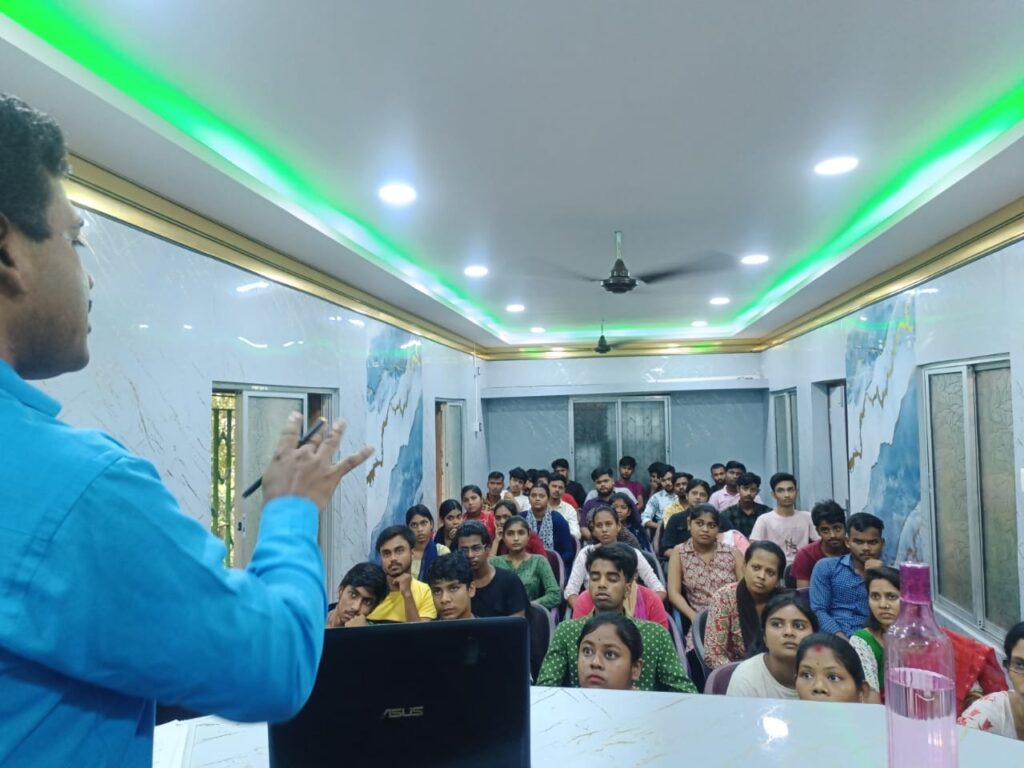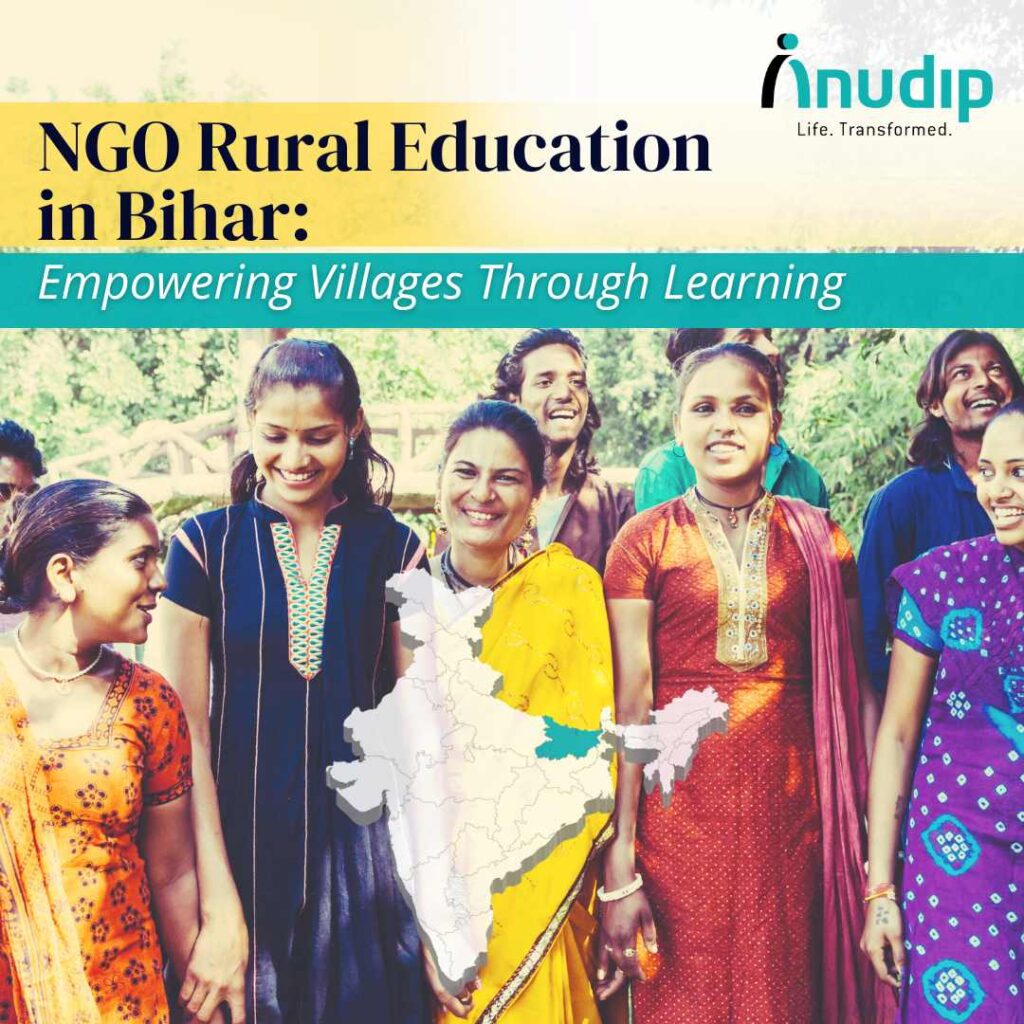-By Isha Singh
In Bihar’s rural areas, many children still lack access to quality education. Schools are far. Facilities remain inadequate. And teachers are in short supply. For girls, the challenges are even bigger. Poverty, gender bias, and early marriage often force them to leave school early.
This reality affects thousands of families. Children are often expected to help with chores or farming. Girls face pressure to marry young. Education takes a backseat.

According to NSO 2020, Bihar’s literacy rate is just 70.9 percent. This is much lower than the national average of 77.7 percent. Clearly, more needs to be done.
That’s where NGO rural education in Bihar plays a vital role. These programs are filling gaps in access and learning. They use flexible, community-based methods to reach the most underserved. And they are working.
Why Bihar’s Villages Need Support
Rural Bihar faces many educational problems. Many schools lack toilets, power, or even proper buildings. Children walk long distances just to attend class. Often, they are taught in overcrowded rooms with limited resources.
These problems create stress for families. For many parents, sending a child to school is a tough choice. Especially when survival depends on every helping hand.

According to the Ministry of Education, more than 30 percent of rural girls drop out before reaching high school. Early marriage and domestic responsibilities are major reasons.
This dropout rate has a lifelong impact. Girls who leave school early are more likely to remain in poverty. They also face health risks and limited job options.
How NGOs Are Closing the Learning Gap
Fortunately, NGOs in Bihar are stepping in. They are using new models of learning. These programs go beyond traditional classrooms. They meet learners where they are present physically and academically.
Some effective strategies include:
- Small learning centers inside villages
- Evening classes for working children
- Digital lessons on tablets and phones
- Local volunteers trained to teach nearby students
These approaches make learning easier. They also reduce dropout rates. Children no longer have to choose between school and survival.
Most importantly, the model fits the child’s life. It is personal. It is practical. And it is led by the community.
When Villages Believe, Youth Thrive
A powerful example comes from West Bengal. In Basudevpur, a small panchayat contributed ₹12,000 to cover training fees for 15 rural youth. This decision happened during a local seminar on digital skills and jobs.
Leaders, families, and training teams gathered to support young learners. The moment showed something powerful. When a village believes in its youth, real change begins.

Similar stories are now emerging across Bihar. Village councils are offering spaces for classes. More families are encouraging girls to stay in school.
These small acts create large ripple effects. When a girl finishes school, she inspires ten others. That is how change grows.
Uplifting Girls Through Education
Girls in rural Bihar face additional barriers. Many care for younger siblings. Some are pushed into marriage before they finish school. Others have never seen a computer.
NGOs are working to remove these barriers. They are helping girls through:
- Girls-only learning spaces
- Training in digital, English, and soft skills
- Local women’s groups to support education
- Workshops to shift mindsets within families
According to the ASER 2022 Report, female participation increased by 40 percent in villages where communities supported education.
This shows the importance of collective effort. When families and neighbors support girls, everything changes.
Engaging Men in Gender Equality
Men hold influence in rural homes. Their support matters. That is why NGOs now include men in gender awareness efforts.

According to UN Women, involving men improves outcomes in gender programs.
In Bihar, NGOs are creating spaces for men to learn and reflect. Some strategies include:
- Community dialogues and street plays
- Father-focused workshops
- Local campaigns where men pledge to support girls’ education
These steps help shift deep-rooted norms. They also create strong, supportive environments for girls.
When fathers stand with daughters, entire villages move forward.
Tracking What Works
NGOs also measure their work. They use simple tools to track impact. These include:
- Pre- and post-training tests
- Attendance records
- Parent and student feedback
- Follow-ups on job placements
This ensures transparency. It also helps improve programs.
A study by IDinsight found that village-led education efforts in Bihar boosted basic skills by up to 30 percent. This kind of improvement proves the value of these models.
Data helps build stronger, smarter systems. It also gives donors and partners confidence.
Why Education Is Key to Sustainable Development
Education unlocks potential. It creates choices and improves well-being. Every year of schooling increases a girl’s future income by 20 percent, according to Brookings.
Educated youth:
- Earn more money
- Make healthier life decisions
- Raise stronger families
- Contribute to their communities
These benefits do not stop with the individual. They spread. One educated child can lift an entire family. An educated village becomes a stronger society.
This is why rural education in Bihar matters. It is not just about reading and writing. It is about changing lives.
The Role of Community Ownership
Sustainable change starts from within. That is why NGOs are encouraging community ownership. Local women and youth are being trained as educators. Panchayat halls serve as learning spaces. Parents help track children’s progress.

This model builds trust. It also ensures long-term impact.
In many Bihar villages, former students are now becoming trainers. They inspire the next generation. Their stories show what is possible when opportunity meets effort.
When communities own the process, progress lasts longer.
Conclusion: Building a Learning Culture

Clearly, NGO rural education in Bihar is making a difference. These programs are local, inclusive, and rooted in real needs.
From digital classes to community teaching, each step helps bridge the gap. Every child who learns. Every girl who stays in school. Every parent who supports education. These are signs of a better future.
With continued support, Bihar’s villages can become learning hubs. Education will open doors. Skills will bring income. And dreams will have a path forward.
In the end, change begins with a single student and a village that believes in them.

